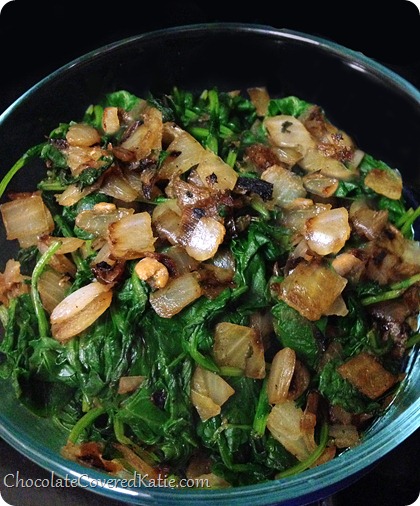Cooking Kale
Bursting with nutrients, kale makes a tasty addition to soups, casseroles, or even simply sautéed as a side dish. Learn how clean, prep, and cook your favorite greens. Whether you’re juicing, baking, or incorporating your kale into a main dish or salad, we’ve got quick and easy recipes. This is a technique that elevates basic sauteed greens into something even more savory and tender.
How To Cook Kale Perfectly. Some people like kale raw in salads or blended in a smoothie, lightly sautéed with a little olive oil, maybe steamed. Milkshake Recipes. I like my kale cooked - completely submerged. But I want it to retain a bright green color and still a little tooth. Before I tell you how I make my green, toothy kale, let me share Dr. Cinque's recent thoughts about kale. The guy is irresistible: "Some foods suit us better if we cook them.
Consider kale. It’s extremely nutritious, and you can eat it raw if you grow it yourself and pick it when it’s very young and tender, like lettuce. But, if you are buying kale at the supermarket, you had better cook it. It’s mature, which means that It’s too tough and fibrous to eat and digest raw. And even if the cooking destroys some of the vitamins, it doesn’t matter. There are so many vitamins there that you can afford to lose a few. So, don’t worry about it. You will get more good out of that vegetable if you cook it.
Your bottom line (the amount you digest and absorb) will be greater, and that's what matters."Bix's Kale. Buy a bunch of kale, either the curly leaf (shown) or the darker, flatter leaf (lacinato, Russian, or dinosaur kale). Rinse it. Soak and swish it in the sink to remove soil and bugs. Bring a big pot or pan of water to a full boil.
Add about 1/2 teaspoon salt to the water.*Chop kale. To remove the spine, fold the entire leaf and slice off the thick middle stem. Tear or cut the remaining leaves into about 2 inch pieces. Carefully submerge chopped kale into boiling, salted water. Stir until it comes back to a rolling boil.
Cover almost all the way, allowing steam to escape. You want to cook it fast with high heat so it doesn't lose color or structure.)Cook for 3 to 4 minutes, lifting lid every minute to stir and relieve pressure if needed.
After 3 minutes start testing for doneness by removing a piece, letting it cool for a few seconds and gently tearing it. You can chew it too if it's cool enough. Stop cooking when it's no longer tough but still a little chewy.
Strain kale as you would pasta. Rinse immediately under a stream of cold water to stop the cooking. Let drain.* The salt performs a function other than taste. It shortens cooking time. It could be boiling point elevation, or maybe it helps break down cell walls. It also helps keep the water from becoming too acidic (from the release of plant acids).
Lifting the lid every minute also keeps down the build- up of acid which escapes in steam. It is acid which turns bright green chlorophyll into olive- drab chlorophyll. I usually store this in the refrigerator so it's on hand when I make soup. I add it minced to leftover rice, as a porridge. It's also very good heated with sautéed onions. Do you eat kale? How do you prepare it?________.
